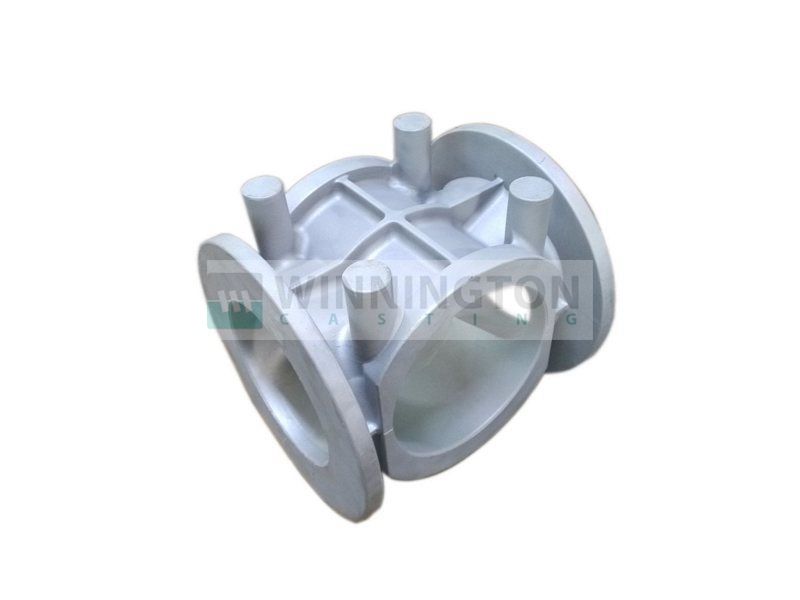Stainless steel CF3M Valve
body investment casting PED NDT available.
Quick Detail:
1. Precision
castings of valve body applied in marine and oil industry,
corrosion resistant material CF3M.
2. Exporting to
Europe and North American;
3. Shot blasted and
electropolished;
4. Max size:
500X500X350mm;
5. Max Weight:
80kg;
6. Chemical
composition tested by German spectrometer;
7. PED and
ISO9001:2008 certificated;
8. NDT test
available (Dye test, X ray test etc).
Description:
Lost wax investment casting
parts of a train component.
We cast a wide range of
materials: stainless steel, carbon steel, duplex alloys,
nickel-based materials, and more:
|
Stainless Steel
(70%)
|
Carbon Steel
|
Alloy Steel
|
|
CF3M (AISI 316L), CF8M
(AISI 316), CF8 (AISI 304),CD4MCu,
CD4MCuN,ANC20,1.4408,1.4517, 1.4306, 303, 430, 420,
17-4PH, SCS1
and more
|
SCS16, SCS14, SCS13,
1.0619, WCB, S355JR, 1045 , LCC
and more
|
ANC2,CLA12C,42CrMo,8Q,4140,6150
and more
|
OVERVIEW OF INVESTMENT
CASTING PROCESS
Investment casting, often called
lost wax casting, is regarded as a precision casting process to
fabricate near-net-shaped metal parts from almost any alloy.
The most common use of investment casting in more recent
history has been the production of components requiring
complex, often thin-wall castings.
The investment casting process
begins with fabrication of a sacrificial pattern with the same
basic geometrical shape as the finished cast part. Patterns are
normally made of investment casting wax that is injected into a
metal wax injection die. Once a wax pattern is produced, it is
assembled with other wax components to form a metal delivery
system , called the gate and runner system. The entire wax
assembly is then dipped in a ceramic slurry, covered with a
sand stucco, and allowed to dry. The dipping and stuccoing
process is repeated until a shell of ~6-8 mm is
applied.
Once the ceramic has dried, the
entire assembly is placed in a steam autoclave to remove most
of the wax. After autoclaving, the remaining amount of wax that
soaked into the ceramic shell is burned out in a furnace. At
this point, all of the residual pattern and gating material is
removed, and the ceramic mold remains. The mold is then
preheated to a specific temperature and filled with molten
metal, creating the metal casting. Once the casting has cooled
sufficiently, the mold shell is chipped away from the casting.
Next, the gates and runners are cut from the casting, and final
postprocessing (sand blasting, machining) is done to finish the
casting.
Applications:
Pumps
Valves
Pipe Fittings
Automotive
Marine and Oil
Machinery
Power & Energy
Specifications:
|
Standards
|
ASTM,JIS,DIN,BS,MIL
|
|
Maximum Casting
Size
|
500*500*350mm
|
|
Casting
weight
|
10g~80kg
|
|
Wall
thickness
|
1.5-2mm Min
|
|
Casting process
type
|
silica sol lost wax
casting
|
|
Machining
|
CNC machining, CNC
lathe
|
|
Surface
finish
|
electro polishing,
satin, hand polished, pickled, zinc plating, vibratory
polishing;
|
|
Tolerances
|
According to VDG
P690
|
|
Physical
performance
|
Tensile test, Impact
test, Hardness test
|
|
Chemical composition
test
|
Spectrometer
|
|
NDT test
|
Dye test, X ray test
etc
|
Competitive
Advantage:
One-stop Services of
Winnington Casting
From
wax die making, wax injection, pouring, secondary machining,
welding, heat treatment, polishing, surface finishing
etc.
By injecting wax into a permanent-molding
die to form a pattern, investment casting get casting parts of
good surface quality and became the solution for many complex
parts that are required in large
quantities.






